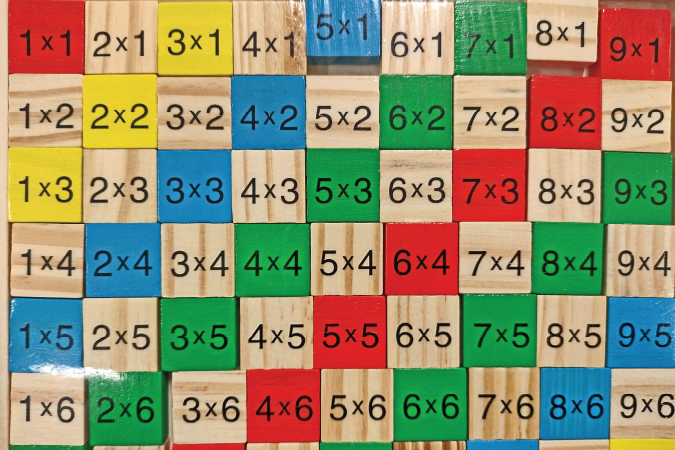Meaning of multiplication symbols
The purpose of this activity is to support students to decode the meaning of multiplication equations and understanding the role of the multiplier, multiplicand, and product in the equations. Problems are restricted to equal sets situations.

About this resource
New Zealand Curriculum: Level 2
Learning Progressions Framework: Multiplicative thinking: Signpost 3 to 4
These activities are intended for students who use additive strategies to solve multiplication and division problems. They may have some simple multiplication fact knowledge and be able to skip count in twos, fives, and tens.
Meaning of multiplication symbols
Achievement objectives
NA2-1: Use simple additive strategies with whole numbers and fractions.
Required materials
- counters or cubes (teddy or people counters, if possible)
- calculators
See Materials that come with this resource to download:
- Cars activity CM (.pdf)
1.
Laminate several copies of Cars activity CM and cut them up into cards with a single car on each. Lay out five cars in a line.
- Here are five cars.
- Help me put three people in each car.
- How many people do we have altogether in the cars?

2.
Invite students to work out the total number of people in any way they like. Some may resort to counting by ones.
Others may skip count or use simple addition, such as 3 + 3 = 6, 6 + 6 = 12, or 12 + 3 = 15.
Share their methods.
- That was hard mahi. Could we use a calculator to work it out? How?
Students may want to re-enact their additive methods on the calculator.
Record 5 x 3 = on the board.
Try putting that equation into the calculator and see what you get.
- What does 5 mean in our car story? (The multiplier is the number of equal sets.)
- What does 3 mean in our story? (The multiplicand is the number in each set: 3 people per car.)
3.
Create similar stories using people in cars. Good examples are:
- Eight cars with two people per car (8 x 2 = 16)
- Four cars with five people per car (4 x 5 = 20)
- Six cars with four people per car (6 x 4 = 20)
4.
With each problem, invite students to create the model using cars and counters. Ask them to use non-calculator strategies first before anticipating the calculator algorithm that solves the problem.
- Can students record the multiplication equation for each story?
- Can they explain the meaning of the numbers in the equation?
- Can they explain the meaning of the x symbol as "of"? (For example, “four cars with five people per car.”)
5.
Provide students with car cards and counters to create physical models. Let them work in pairs to create their own car scenarios, draw the situation, and record the multiplication equation.
Be aware that students may not put equal numbers of people in each car. That is an excellent learning opportunity, as multiplication only applies when sets are equal.
6.
After a suitable time, gather the group and pose problems about working backwards from the equation to the model.
Write 2 x 5 = 10.
- Who thinks they can make the car and people model for this equation?
Look to see if students use two cars with five people per car.
7.
Pose similar problems with equations like:
4 x 4 = 16 7 x 2 = 14 5 x 3 = 15 3 x 4 = 12
1.
Work on students’ fluency for solving equal addition problems mentally. That involves using addition facts, particularly doubles, to find products. For example, 4 cars with 6 people per car can be solved as 6 + 6 = 12 and 12 + 12 = 24.
2.
Build up students’ repertoire of basic multiplication facts. Start with easy examples involving multiplies of 2, 5, and 10. Create a display of known facts as cards on the maths wall.
The quality of the images on this page may vary depending on the device you are using.


